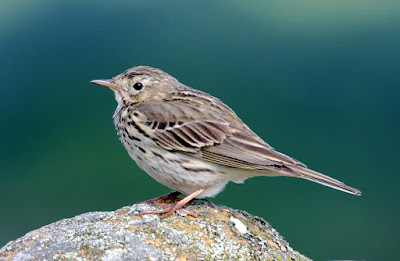After the mishap in Menorca my Canon lens has gone to the lens doctor for a thorough examination. It may or may not come back, and it could be three to four weeks before the decision. I chanced upon a possible replacement, a Sigma, a lens which by all accounts performs quite well.
So I waited for a sunny day to test out the substitute, and when this morning dawned bright I took off for the hills of Bowland with fingers crossed.
Lapwings and Curlews were in good numbers but I struggled to see and photograph both Oystercatchers and Redshanks. Maybe another week will see more activity as young emerge from the mostly distant nests I could see and hear but not picture. The Lapwing I photographed had young, perhaps obvious from the demeanour of the adult as it frantically warned the youngsters in the field to run and hide. It’s unusual to see a Lapwing on a wall.
Lapwing
Lapwing
I slowed the car hoping to photograph a Snipe calling from a roadside post. The road was a little too narrow and the Snipe flew off into the rushy field. I made a mental note of the spot for another day. A pair of Curlew had two youngsters on a date I thought rather early. Against the light and into the bright cotton grass came a couple of pictures.
Curlew
Curlew
I saw lots of Meadow Pipits but none appeared to have youngsters just yet. Catching them on a roadside post or a wall with a beak full of food makes for the best chance of a picture but none would perform today. Likewise the Pied and Grey Wagtails; the former outnumbered the latter by 10/1 on my journey, the Pied seen almost everywhere, the Greys mostly at Marshaw stream.
Meadow Pipit
It was near Marshaw and Tower Lodge I saw and heard good numbers of Siskin, Lesser Redpoll, Willow Warbler and Blackcap. Also, a pair of Stonechat feeding young out of the nest and several pairs of Mistle Thrush, one of them feeding a just fledged youngster.
I had an unusual one today – a Red Grouse chick. As I tried to photograph a pair of adults I saw two youngsters scrambling up the roadside bank trying to reach their parents.
Red Grouse chick
Red Grouse
The Red Grouse Lagopus lagopus scotica, also known as the moorcock, moorfowl or moorbird is a bird of heather moorland with a range restricted to areas of blanket bog and upland shrub heath. It is a subspecies of the Willow Grouse Lagopus lagopus lagopus, whose range extends across the northern latitudes of Europe, Asia and North America. The Red Grouse differs by not developing white plumage during winter and having a diet almost exclusively of heather.
Since the mid-1800s, upland areas of heather have been managed to produce grouse for shooting. Grouse shooting has been one of the major land uses of upland ground and an important source of income for many estates.
The Red Grouse population is declining, perhaps linked to diseases, the loss of heather moorland largely due to over-grazing by sheep, and conversion to forestry. Numbers have declined seriously in Scotland and grouse are now only present in very low numbers in Wales.
The Red Grouse is considered a game bird and is shot in large numbers during the shooting season which traditionally starts on August 12, known as the Glorious Twelfth. There is a keen competition among some London restaurants to serve freshly killed grouse on August 12, with birds being flown from the moors and cooked within hours.
Many moors are managed to increase the density of grouse. Areas of heather are subjected to controlled burning; this allows fresh young shoots to regenerate, which are favoured by the grouse. Extensive predator control is a feature of grouse moor management: foxes, stoats and crows are usually heavily controlled on grouse moors. The extent to which it occurs on grouse moors is of course hotly contested between conservation groups and shooting interests. The subject generates a lot of media attention in relation to grouse moors and shooting with one bird of prey in particular, the Hen Harrier, a major source of dispute.
I didn’t see a single raptor this morning, no Kestrels or Buzzards, not a Sparrowhawk nor a Goshawk, and certainly no Hen Harriers. Just a coincidence I’m sure.































































.jpg)












